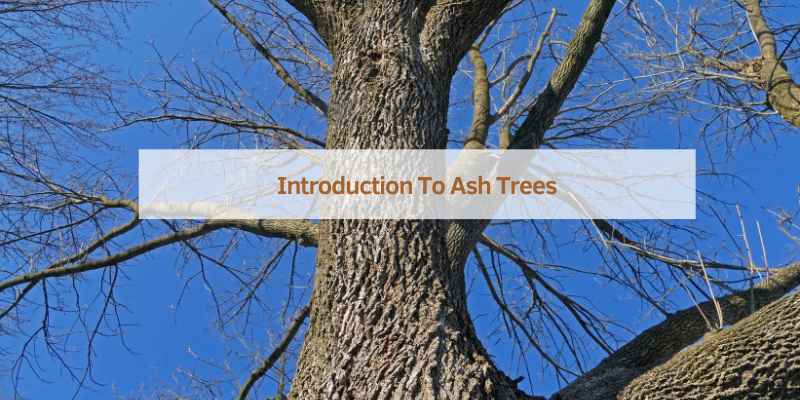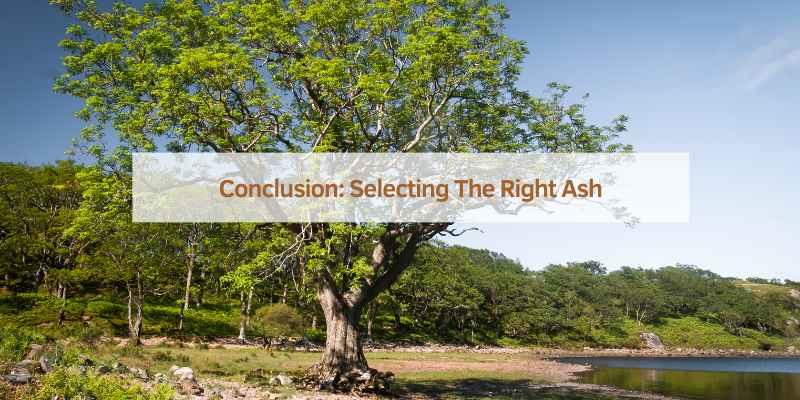The best ash tree for most landscapes is the Green Ash. It’s hardy, adaptable, and aesthetically pleasing.
Ash trees are valued for their strength, beauty, and adaptability. The Green Ash, Fraxinus pennsylvanica, is especially popular in urban and suburban environments due to its resilience and fast growth rate. This tree thrives in various soil types and conditions, making it an excellent choice for different landscapes.
Its vibrant green foliage provides ample shade during summer, and its leaves turn yellow in the fall, adding seasonal interest. Green Ash trees also have a high tolerance for pollution, which makes them suitable for city planting. Their robust nature and attractive appearance make them a favorite among homeowners and landscapers.
Introduction To Ash Trees
Ash trees are popular in many gardens. They look beautiful and provide shade. People love their strong branches. These trees grow quickly. They can reach great heights. This makes them great for large yards. The leaves of ash trees turn lovely colors in fall. Many people plant them for this reason.
Ash trees help the environment. They provide homes for birds and insects. The roots of these trees hold the soil together. This helps prevent erosion. Ash trees also clean the air. They remove pollutants and give us fresh oxygen. Having these trees in your garden is very beneficial.

Historical Significance Of Ash Trees
Ash trees have a rich history in mythology. In Norse myths, Yggdrasil, the World Tree, is an ash tree. This tree connected the heavens, earth, and underworld. Many cultures view ash trees as symbols of strength and protection. Ancient Greeks believed ash trees were linked to their gods. Ash wood was used to make spears and shields. Native American tribes also respected ash trees. They used the wood for tools and canoes.
Ash wood is strong and flexible. It has been used for centuries. People made furniture, tools, and sports equipment. The wood is perfect for making baseball bats. It is also used for making bows and arrows. Ash trees were valued for their healing properties. Leaves and bark were used in traditional medicine. They treated various ailments and pains. Today, ash trees are still admired for their beauty and utility.
Identifying Ash Trees
Spot the best ash tree by identifying its compound leaves with 5-9 leaflets and diamond-patterned bark. Look for distinctive, opposite branching and sturdy, straight trunks.
Leaf Structure
Ash tree leaves are compound leaves. Each leaf has 5 to 11 leaflets. The leaflets have serrated edges. They are arranged opposite each other on the stem. The leaves are pinnately compound. They grow in pairs. The leaves are green in summer and yellow in fall.
Bark And Branch Characteristics
Ash tree bark is grayish-brown. The bark has diamond-shaped ridges. It becomes rougher with age. The branches are sturdy and spread out wide. New branches are smooth and shiny. Older branches become more textured. The twigs are opposite each other. They are smooth and brown. The buds are black or dark brown. They are rounded and opposite each other.
Top Ash Tree Varieties For Gardens
White Ash is a popular choice for gardens. It grows tall and strong. Its leaves are a lovely green in summer. In fall, they turn a beautiful purple or yellow. White Ash trees provide great shade. They are also very hardy. This makes them a reliable option for many gardeners.
Green Ash trees are known for their adaptability. They can grow in many types of soil. This includes wet and dry conditions. Green Ash trees have bright green leaves. These leaves can turn yellow in the fall. Green Ash is a good choice for areas with tough conditions. They are also disease-resistant. This makes them easy to maintain.
The Majestic Black Ash
The Black Ash tree is known for its striking bark. The bark has a deeply furrowed texture. This tree also has compound leaves. Each leaf has 7 to 11 leaflets. These leaflets are finely toothed. The Black Ash tree is highly resilient. It can survive in wet environments.
Black Ash trees grow best in cool climates. They need moist soils. The soil should be rich in organic matter. These trees are often found in swamps and wetlands. Black Ash trees also tolerate flooded conditions. They are a great choice for areas with high water tables.
Caring For Your Ash Trees
Ash trees love well-draining soil. They can grow in clay, loam, or sandy soil. Full sunlight is best for ash trees. They need at least 6 hours of sunlight each day. Plant them in a spot with good air circulation. This helps keep them healthy.
Water your ash tree deeply once a week. Young trees need more water. Older trees need less water. Mulch around the base to keep the soil moist. Use a balanced fertilizer in spring and fall. This helps the tree grow strong. Avoid over-fertilizing as it can harm the tree.
Pest And Disease Resistance
Ash trees known for their pest and disease resistance stand out in landscaping. These resilient trees require less maintenance and provide long-term beauty.
Emerald Ash Borer Threat
The Emerald Ash Borer is a big threat to ash trees. It is a small, green beetle. This beetle can kill ash trees quickly. Many ash trees have died because of it. It is important to protect ash trees from this pest. The beetle lays eggs on the tree bark. The larvae eat the tree from the inside. This makes the tree weak and sick.
Preventative Measures And Treatments
Preventative measures can help keep ash trees safe. Inspect trees often to catch problems early. Healthy trees are less likely to get sick. Treatments include using special chemicals. These chemicals can kill the beetles. Some treatments can be injected into the tree. Other treatments can be sprayed on the tree bark. Both methods can help protect the tree.
Ash Trees For Specific Needs
Fast-growing ash trees are great for quick shade. They grow up to 3 feet per year. The Green Ash is a popular choice. It is strong and adapts well to different soils. The White Ash also grows quickly. It displays stunning fall colors. Both types are easy to maintain.
Drought-resistant ash trees need less water. They are perfect for dry areas. The Modesto Ash is a good option. It can survive in hot climates. The Arizona Ash is another choice. It thrives with little water. These trees are tough and long-lasting.
Incorporating Ash Trees In Landscape Design
Ash trees create stunning focal points in any landscape. Their height and shape draw the eye. Planting an ash tree in the center of a yard adds balance. People love the shade they provide. The leaves turn beautiful colors in autumn. This makes them stand out even more. The bark has a unique texture. This adds interest to any garden.
Planting ash trees with other plants boosts biodiversity. They support many insects and birds. Companion planting with flowers is a great idea. The flowers attract pollinators. This helps the whole garden thrive. Some good companions are daffodils and tulips. These flowers look beautiful in spring. They grow well under ash trees.
Conclusion: Selecting The Right Ash
Choosing the best ash tree enhances your landscape with beauty and resilience. Opt for disease-resistant varieties to ensure longevity and minimal maintenance. Proper selection leads to a thriving, picturesque environment.
Personal Preferences
Choose an ash tree that fits your yard and style. Think about the tree’s height and shape. Some ash trees grow tall and wide. Others stay small and narrow. Select one that looks good in your space.
Check the tree’s leaf color. Some ash trees have bright green leaves. Others have a golden or purple hue. Pick a color you like for your garden.
Environmental Considerations
Consider your local climate when picking an ash tree. Some ash trees do well in cold areas. Others need warmer weather. Choose a tree that will thrive in your region.
Think about soil type. Some ash trees prefer sandy soil. Others grow better in clay or loamy soil. Make sure your soil matches the tree’s needs.
Look at the water needs. Some ash trees need lots of water. Others can handle dry conditions. Pick one that fits your watering habits.

Frequently Asked Questions
What Is The Fastest Growing Ash Tree?
The Green Ash tree is the fastest growing ash tree. It can grow up to 24 inches per year. Ideal for urban environments, it offers quick shade and aesthetic appeal.
What Is The Best Ash Tree For Shade?
The best ash tree for shade is the White Ash. It grows quickly and provides excellent coverage. Its dense foliage offers ample shade, making it ideal for large yards.
What Is The Difference Between Green Ash And Carolina Ash?
Green ash has lance-shaped leaves and grows in various soils. Carolina ash has rounder leaves and prefers wet areas.
What Is The Difference Between Green Ash Tree And Texas Ash Tree?
Green ash trees have pointed leaflets and are more cold-hardy. Texas ash trees have rounded leaflets and prefer warmer climates.
Conclusion
Choosing the best ash tree enhances your landscape’s beauty and provides environmental benefits. Consider your climate and soil conditions. Select a species that meets your needs. With proper care, your ash tree will thrive for years. Enjoy the shade and natural elegance it brings to your outdoor space.


